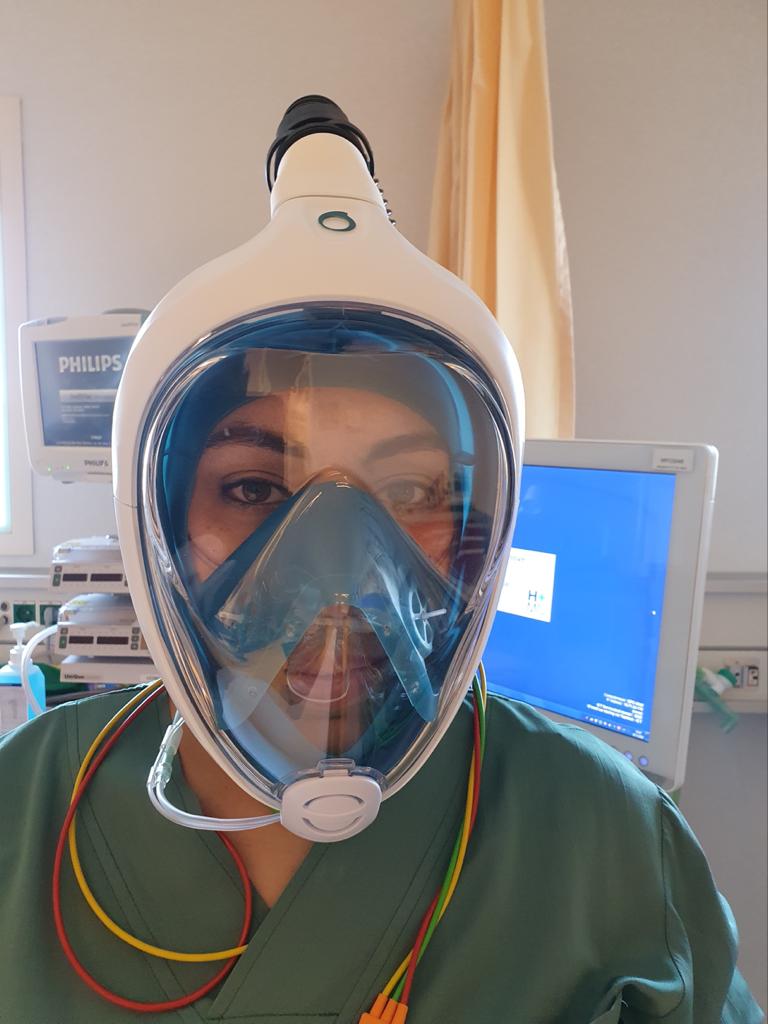About

Welcome!
This user guide is an initiative by Sara Galli, an anesthesiologist in the Hague who also completed a fellowship in Intensive Care. Having been involved with several innovative projects concerning reusable masks, such as the Air-wave.org, I noticed that there was
unfortunately a delay in applying these innovations on the work floor, even after successful testing.
In short while I still believe that the Air-Wave.org and other PAPR units are superior, their clinical use is limited by the required logistical support and financial initial investment that can only be carried out with the back-up of political or hospital administrations. This guide was created so that health care workers could independently take charge of their safety if needed. If governments and hospitals wish to apply these reusable masks on a larger scale this is of course to be encouraged.
All information on the site is provided in good faith and your use of the site and your reliance on any information on the site is your own responsibility. My aim is to share informing, personal experiences and my professional perspective to help you chose a model that works best for your needs. This site is meant for health care workers and should if possible only be shared among health care workers. I have no shares in any mask manufacturing companies or other financial entanglements in this field. My only interest is to share knowledge that can contribute to keeping my colleagues and my patients safe in these difficult times.
Background information
The Netherlands experiences just as in the rest of the world a shortage of PPE, especially FFP2 masks. The increasing demands for FFP2 masks simultaneously all over the world, with an average consumption of 20 masks per day per ICU COVID-19 patient,
is a challenge for manufacturers to keep up with production. Adding the disturbance of supply chains, the closing of borders and delays of deliveries and it has lead to FFP2 masks being resold at the last minute on the tarmac to the highest bidder and the military needing to protect deliveries due to an out of control market.
Even restricting the use of FFP2 only for high risk situations has not solved this problem. While initially the problem was the quantity
of masks, in time the problem has shifted to being the quality. In nursing homes it turned out that half of the so-called FFP2 masks failed when tested for filtration. In some hospitals as much as two third fell well below the FFP2 norm. Worldwide, 3M has filed over 4000 complains for fraude with protective gear. The consistency of quality of FFP2 masks is therefore a substantial problem with disposable masks. And we are not even taking into account the environmental damage wreaked by the enormous increase in waste as well as the depletion of raw materials for the manufacturing of disposable masks.
Due to severe shortage and lack of alternatives there have been several methodes developed for sterilizing disposable masks after use. But the limit of these treatment as well as the affect on filtration function can vary and are often unknown.
Potential of reusable mask
I personally believe that relying solely on disposable masks are a losing strategy in this setting. Using reusable masks in those departments within the hospital that have a high exposure to COVID-19 patients and therefore consume a lot of masks would significantly reduce the depletion of disposable masks for other departments.
I have started looking at reusable masks that have been used for decades against gasses and industrial vapors. These masks have the advantage of being extensively tested by the manufacturer and up to the norms, there is decades of experience using them with all sorts of dangerous substances like toxic gas or asbestose. As they are sturdy and made to be used for up to 10 years, you can use them no matter how many waves we are faced with and also for an eventual new disease in the future. Furthermore they are affordable and can simply be purchased online.
Reusable masks not only offer a consistent quality and a sustainable alternative for disposable masks but they also are an improvement on safety and comfort. The masks that are highlighted offer a FFP3 protection instead of a FFP2. Furthermore reusable masks are an improvement for comfort due to less buildup of heat due to the expiration valve and less pressure on the face with the silicone face seal during prolonged use.
Reusable masks not only offer a consistent quality and a sustainable alternative for disposable masks but they also are an improvement on safety and comfort. The masks that are highlighted offer a FFP3 protection instead of a FFP2. Furthermore reusable masks are an improvement for comfort due to less buildup of heat due to the expiration valve and less pressure on the face with the silicone face seal during prolonged use.
